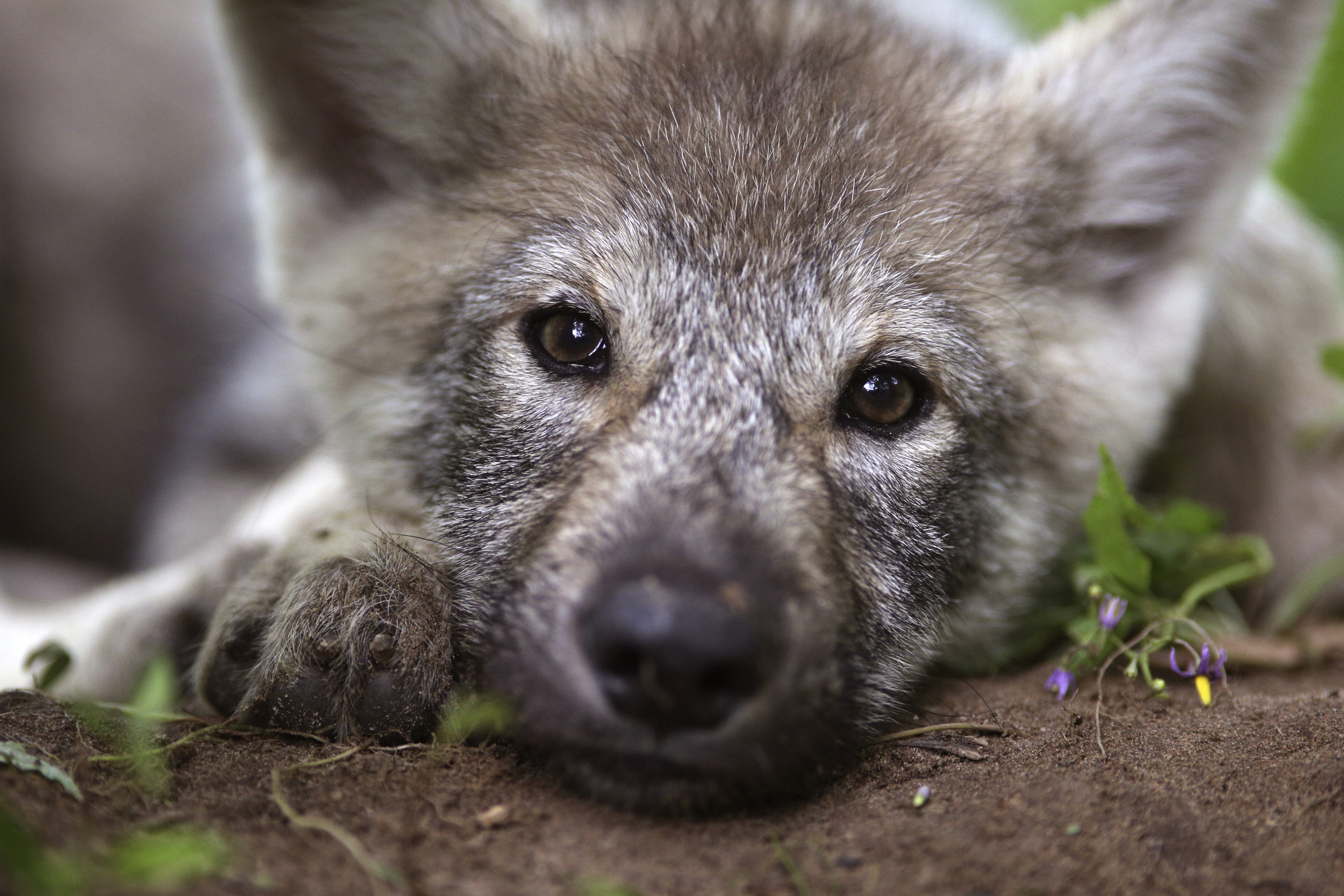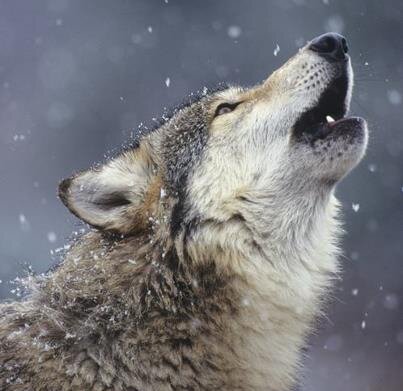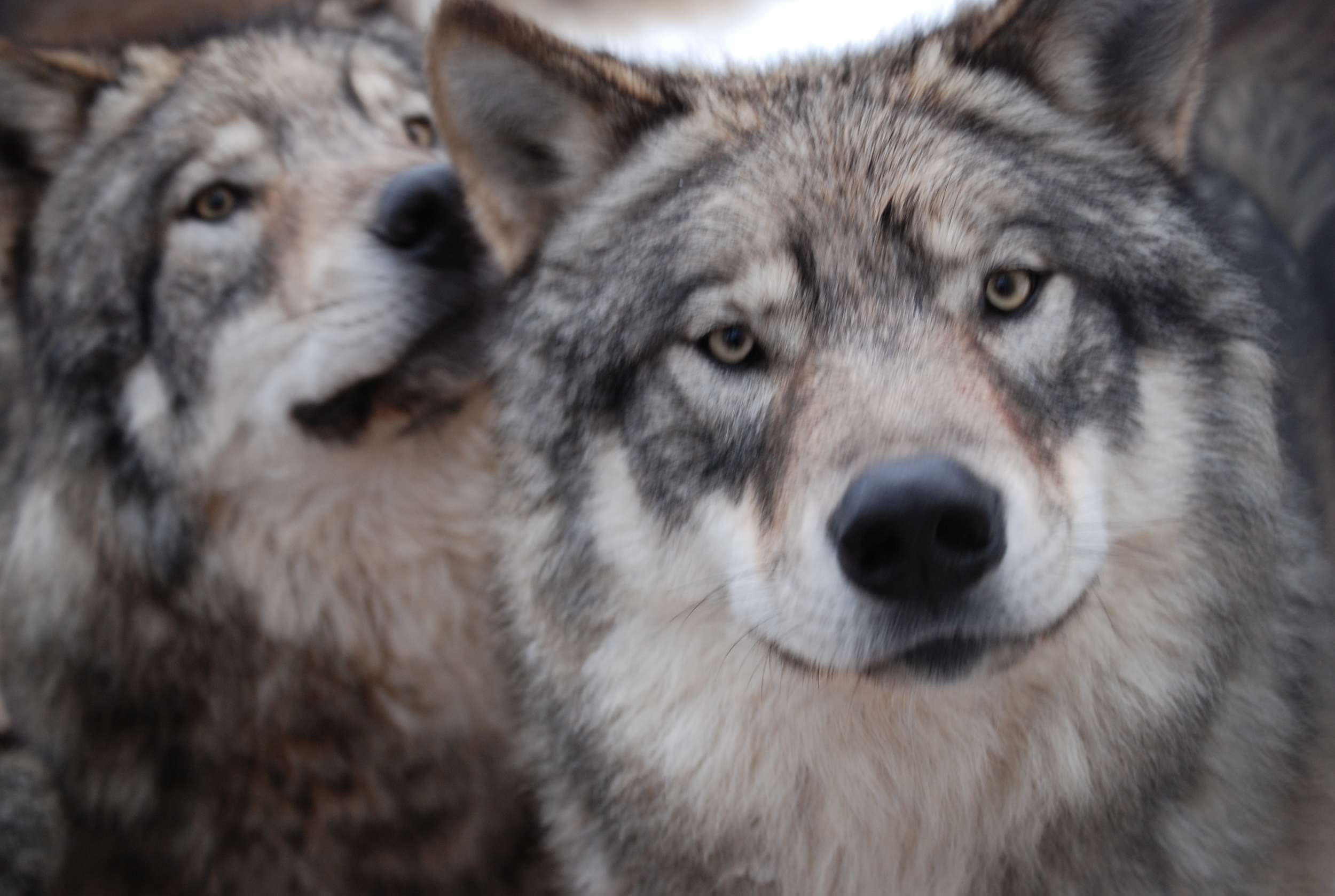Gray Wolf
Canis lupus
IDENTIFICATION
Length: Adult wolves can be 5 to 6.5 feet long.
Weight: Adult wolves vary in weight from 50 to 130 pounds, depending on the gender and subspecies.
Color: Their pelage is gray, black and/or buff with reddish coloring, but they can also be all black.
Sounds: Yapping, howling, barks, whimpers, and screams can all be heard from wolves.
HABITAT
Range: Regularly-occupied wolf range in Minnesota has been estimated at 88,325 square km (34,102 square mi.) in the forested portions of central and northern Minnesota.
Diet: In Minnesota, their main diet is mostly deer, but may also include beaver, rabbits, birds, and small mammals. Large ungulates (deer, moose, elk) are often the main prey item for all wolves across the USA
Status: Federally Threatened in Minnesota; Endangered elsewhere in the Great Lakes Region.
Gray Wolf scat. Image from WesternWildlife.org.
Comparing canid tracks. Image from WesternWildlife.org.
LIFE CYCLE
Wolves generally live to be 6-8 years old in the wild, but can live to twice that age in captivity; starvation, intraspecies strife, human conflict, disease, and vehicle collisions are some of the main causes of death in the wild. Pack size is highly variable due to the birth of pups, but is typically between 4 to 8 wolves. Territory sizes range from 25 to 150 square miles; neighboring packs can share common borders, but territories rarely overlap by more than a mile. These pack animals rely on strong social bonds to hunt and raise pups.
Reproduction: Wolves breed from February to March in Minnesota, but breeding period varies among regions. Gestation period is usually between 63 and 65 days, with 4-7 pups born in April and May. Pups are born in a den and will live there until they are 6-8 weeks old. Pups remain at or near these sites while the adults hunt and bring back food. Gray wolves generally disperse from their pack at 1-2 years of age.
Some subspecies of the gray wolf include the Western Great Lakes wolf (C. l. lycaon), the Northern Rocky Mountain wolf (C. l. occidentalis), and the Mexican wolf (C. l. baileyi) — all of which can be found at the Wildlife Science Center.
Continental USA Gray Wolf range. Image from Lorena Iniguez Elebee (LA Times) via information from USFWS.







